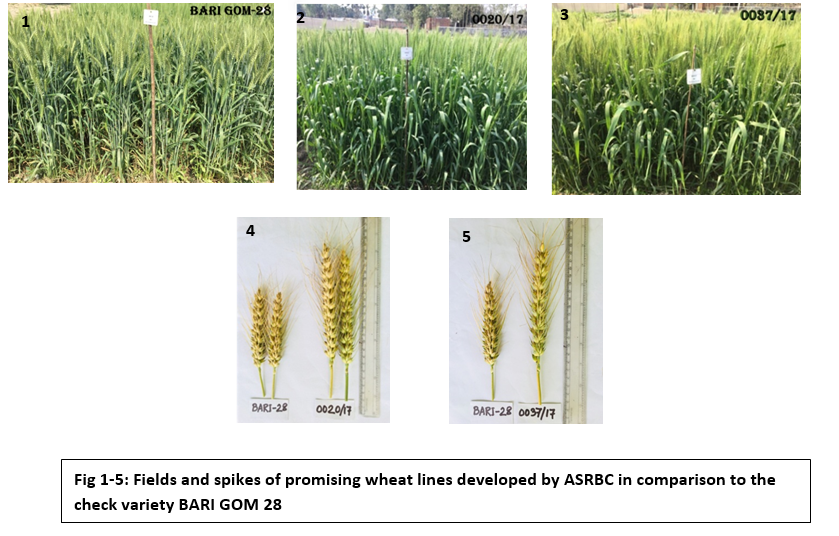Wheat is the second most important grain crops of Bangladesh, rice being the first one. The yield per hectare of wheat on average of three years is almost 3 tons/hac. In case of rice, the average of three years is 2.9 tons/hac. (BBS 2016:xvii). Nutrient wise wheat is better than rice, production cost wise it is more cost-efficient and in terms of irrigation, much less water is required, thereby saves water during the dry Boro season of the year. In terms of use as food, wheat has been gaining more popularity in the consumer and processing markets irrespective of economic class differences. Finally, the wheat straw in recent years is not only being used as fuel but also as a roof of the poorer section of the population.
Improvement of varieties of wheat is somewhat difficult due to its large number of chromosomes from different wild/cultivated sources. There are already a good number of varieties in the national list where from the most favorable gene/s can be brought in into one variety through gene pyramiding and marker assisted breeding. Mutation breeding can also be used for the creation of micro-mutants suitable for not only high yield but also for tolerant to heat and salinity can be selected for. Salinity and Heat tolerance traits are important for Bangladesh because the land areas of cultivation are increasing towards the south of the country where salinity in the soil and mostly in the wheat growing season is high so is the temperature of the area.
For the past few seasons, the ASRBC has been involved with wheat breeding, using the Gene mutation technique on BARIGom28, as well as gene pyramiding of a number of promising varieties in collaboration with Hajee Mohammad Danesh Science and Technology University (HSTU) in Dinajpur. The finally selected materials from segregating population of both programs are in the field during 2017-18 wheat growing season. Maximum of 3-4 lines will finally be selected for regional test during the next season from experiments at Debiganj, HSTU, Dinajpur and Sher-E-Bangla Agricultural University, Dhaka. The next step is to transfer gene/s and select varieties having strong thick leaves, with high vein density and high biomass over a shorter period of time. There are available genetic materials for this. Assistance of Dr. Nahiyan and Mr. Saif of ASRBC is acknowledged
Prof. Lutfur Rahman,
Advisor, ACI Agribusiness and
Advisory Editor, Biolife




